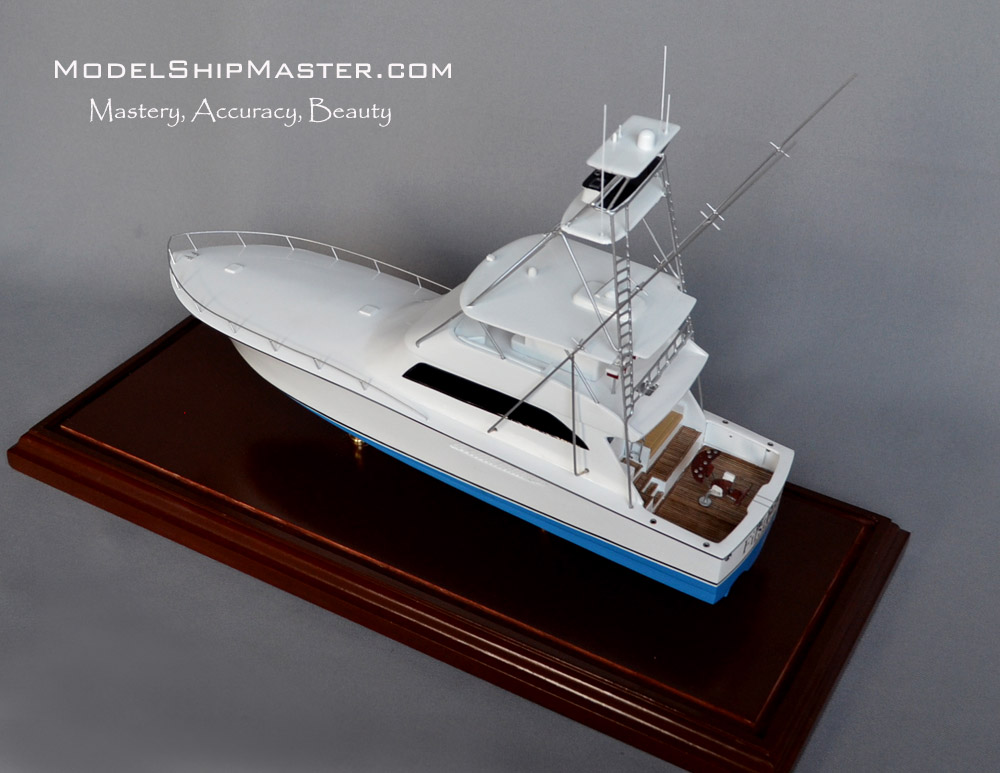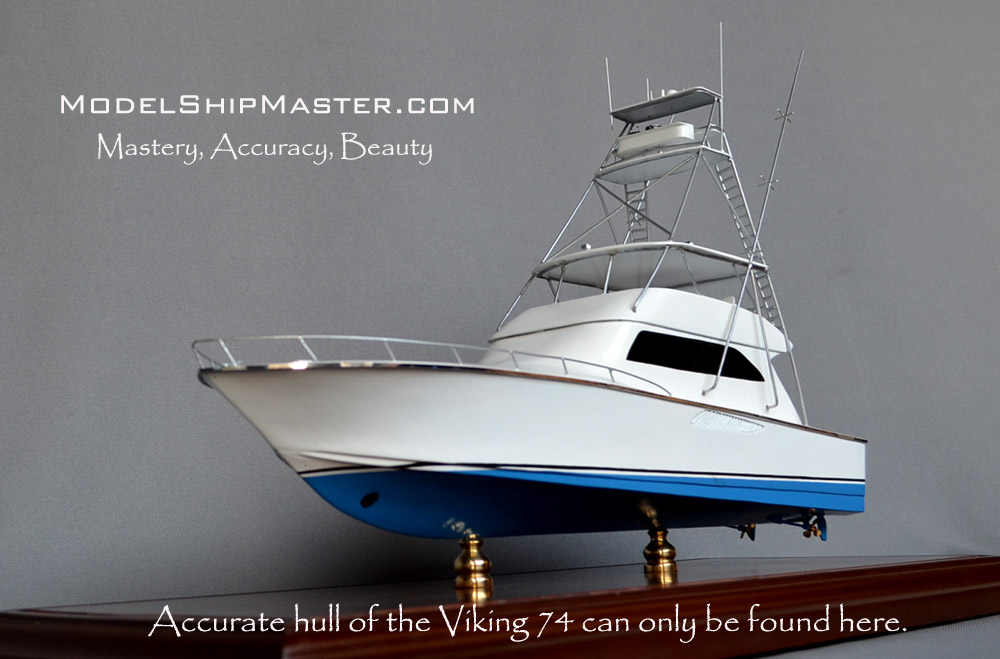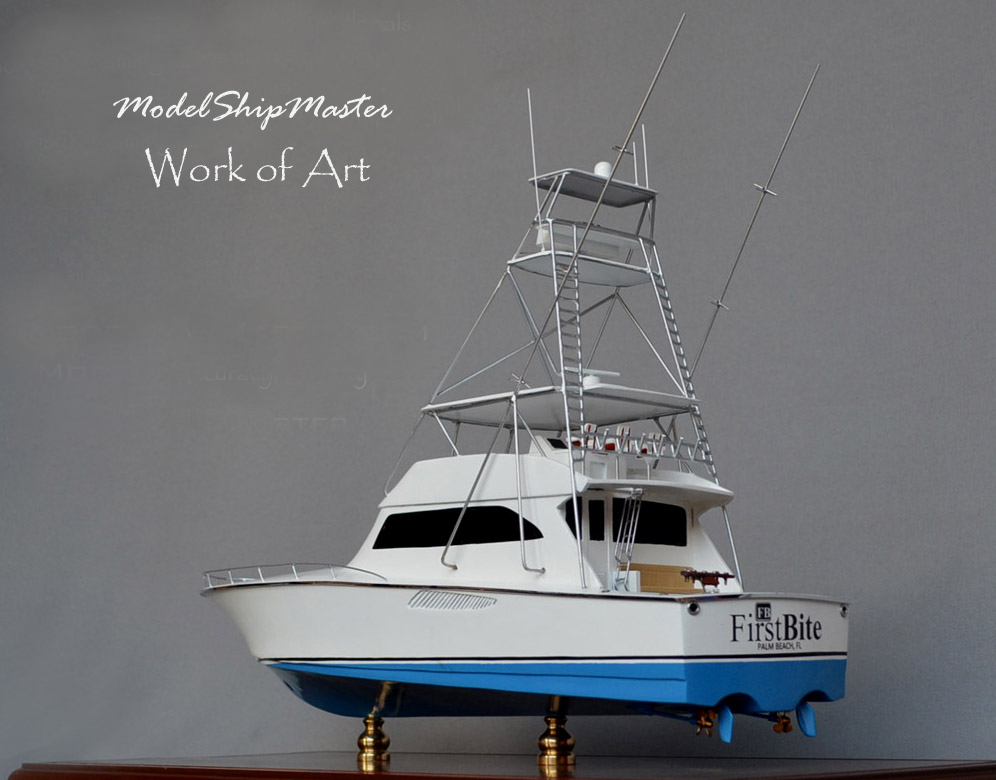|


256-bit encryption
$500,000 protection

|
VIKING SPORT FISHING 74
Designed by the father-and-son team of Bruce and David
Wilson, the 74 actually started as a 68/70. But Viking
president Pat Healey wanted more proportion and balance. Thus the 74 was born, in 2004. The largest
Viking yacht to date, the 74 has a 20 feet starboard and
weighs 135,000-pound.

Two 2,030-hp MTU Series 2000 V-16s gives the 74 a
top speed of more than 44 mph.
With
an optional 600 gallons of fuel added to the 74’s
standard 2,400-gallon capacity, the boat can run for 544
nautical miles. And if runs at 2,000 rpm (about 37
mph), it can reach 644 nautical miles.
The 74 comes standard with four
staterooms, including the crew quarters. An
optional fifth stateroom is located forward and to
starboard. As with the port-side guest stateroom
and the forepeak VIP stateroom, the master offers an en
suite head and plenty of stowage in drawers and
cabinets. All these quarters are very comfortable and
well-appointed.
More information about the 74 can be learnt by calling
Viking Yachts at (609) 296-6000.

The purpose of tunnels remains the
same as they did on my old boat: to help reduce the
draft. Unfortunately, that goal is at odds with the
laws of physics, which hold that a certain amount of
propeller blade area is necessary for a certain
horsepower, speed, and boat weight. If you don't
have enough blade area, cavitation is the usual
result. Cavitation manifests itself as noise,
vibration, prop and rudder erosion, and degradation
of performance, with increased fuel burn and reduced
speed and range.
So how do you achieve the necessary
propeller blade area and avoid all the problems?
Generally, a larger prop diameter is more efficient than
a smaller diameter, so bigger props are the obvious
answer. Putting physics aside for a moment, that extra diameter
has a practical downside: It aggravates the draft
problem, since propeller tips are the low point on most
boats. There's only so much space for props between the
bottom of the boat and the bottom of the sea. We can't
move the bottom of the sea, but we can move the bottom
of the boat. This is accomplished with prop tunnels.
The
sides of the tunnels are parallel to the centerline
of the boat, and parallel to each other as well for
their entire length. The sides do not converge
either forward or aft. Looking closely at the black
lines drawn athwartship, you can see that at the
forward end of the tunnel, the shape of the tunnel
roof begins very flat, and then transforms into a
progressively tighter radius as we move aft toward
the transom. At the point of the propeller location,
very near the end of the keel on this example, the
tunnel reaches its smallest radius. Aft of this
point, from prop to transom, the shape can be
maintained as in this Viking, or might converge just
a bit to create a slight "nozzle" effect on some
boats.
In addition to having the right shape for the
tunnel, it is important to have the cleanest, most
undisturbed water flowing into and out of the
tunnel. This is done by avoiding discontinuities in
the hull bottom and locating "bottom clutter," such
as thru-hulls and transducers, out of the path of
the water flowing into the tunnels. Shaft strut and
rudder palms should be mounted flush, in indents
molded into the tunnel, if at all possible.
Finally, there's the question of how close the prop
should run to the tunnel walls. On installations
without tunnels, the guideline is to allow 15
percent of the prop diameter (4 ½ inches on a
30-inch prop) as clearance between the hull bottom
and the prop-blade tips, to avoid excessive
vibration. With tunnels, this can easily be
tightened up to 5 or 10 percent, and some designers
have successfully gone to nearly zero without undue
vibration. Obviously, this allows a few more inches
of prop diameter, for more blade area and efficiency, with
resultant speed, range, and efficiency gains and
without added draft.
So there you have it: reduced draft and fuel usage,
more speed and range, less cavitation and vibration.
Tunnels aren't necessary for all boats, but when
draft is a problem, they can be the answer.

The photos above
show a Viking 74
boat model.
We can build any
Viking boat models, any
sizes between 30" and 70". Accurate
and beautiful just like this one, as custom model is our specialty.
If you can take photos of your boat, we
can build the model for you. The process is simple and
easy. We need only a small commitment deposit to start
the process. The remaining balance won't be due until
the model is complete and approved by you.
To commission
a model,
please
click
here to
let us know of your preferences.
Did you notice that many
model makers did not show their models’ hulls and
sterns? It is because they make too much guesswork and
their models' hull would look terrible if shown. It's
easier for some shops to say "museum quality" than to
show. We at ModelShipMaster.com post very large photos
for you to see the unparalleled accuracy and unrivaled
craftsmanship. Nobody
builds better yacht models than ModelShipMaster. Visit
this page learn
more.
Click
to view our other Viking boats:
Viking 64,
Viking 65,
Viking 82.
|